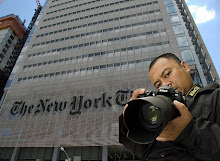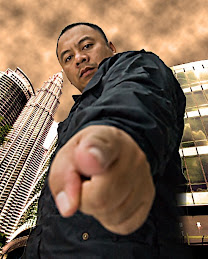
Tanjung Simpang Mengayau is situated in the northern-most tip of Borneo, the third largest island in the world, after Greenland and New Guinea. It is located in the Kudat Peninsula, about three and a half hours (or 215 kilometres) drive from Kota Kinabalu city.
Simpang Mengayau means 'lingering junction' as it is here that the South China Sea lingers and meets the Sulu Seas flowing from the east . Enjoy the stunning view, sunsets and full moon. The nearby Kalampunian Island lighthouse is a reminder of treacherous coastline and past shipwrecks. On the left is the beautiful beach of Kalampunian.
It's a lovely easy stroll to the flagpole, the globe and the rocky outcrop that forms the "Tip of Borneo".
Monday, August 1, 2011
Tip Of Borneo
Posted by
waridah
at
Monday, August 01, 2011
0
comments
![]()
Friday, February 11, 2011
Wednesday, September 29, 2010
Monday, June 21, 2010
Val d'Europe

Val d'Europe (lit. Valley of Europe) is a part of the new town known as Marne-la-Vallée. The final area of the district is currently in development. It is located around 35 km to the east of Paris, near Disneyland Paris. Val d'Europe was built in conjunction with the Walt Disney Company, who wished to create a town near the Disney Resort.
Posted by
waridah
at
Monday, June 21, 2010
0
comments
![]()
Tuesday, March 30, 2010
9 Febuari 2010

Pada 9 Febuari 2010 Ku kibarkan Bendera di Puncak gunung yang tertinggi di negara ku iaitu Gunung Pagon. Perjuangan ku untuk sampai di puncak bukan mudah. 6,070 kaki 1,850 Meter mangambil masa 5 ke 6 jam untuk naik merempuh segala cabaran cabaran anak anak bukit yang curam licin dan berduri.
Posted by
waridah
at
Tuesday, March 30, 2010
1 comments
![]()
Mt Pagon Expedition

Bukit Pagon is the highest mountain in Brunei. It is located on the border with Malaysia The pitcher plant species Nepenthes lowii can be found on the slopes of this mountain.
Posted by
waridah
at
Tuesday, March 30, 2010
0
comments
![]()
Gramli w kayak

A kayak is a small human-powered boat that traditionally has a covered deck, and one or more cockpits, each seating one paddler who strokes a double-bladed paddle. The cockpit is covered by a spraydeck (skirt) that keeps the inside of the boat (and the paddler's lower body) dry. The spraydeck or similar waterproof covering attaches securely to the edges of the cockpit, preventing the entry of water from waves or spray, and making it possible, in some boats, to roll the kayak, capsizing and righting the boat without it filling with water or ejecting the passenger. Some modern kayaks eliminate cockpits, seating the paddler(s) on top of the boat or replace paddles with other propulsion methods.
Inuit seal hunter in a kayak, armed with a harpoon
The kayak was invented and first used by the native Ainu, Aleut and Eskimo hunters in sub-Arctic regions of northeastern Asia, North America and Greenland. In some parts of the world, such as the United Kingdom, kayaks are referred to as canoes and vice versa. Inuit/Eskimo Kayaks are a type of a generic class of boat of Canoe Shape. Continental European and British canoeing clubs and associations of the 19th Century used craft similar to kayaks, but referred to them as canoes. This explains the naming of the International and National Governing bodies of the sport of Canoeing.
Posted by
waridah
at
Tuesday, March 30, 2010
0
comments
![]()





